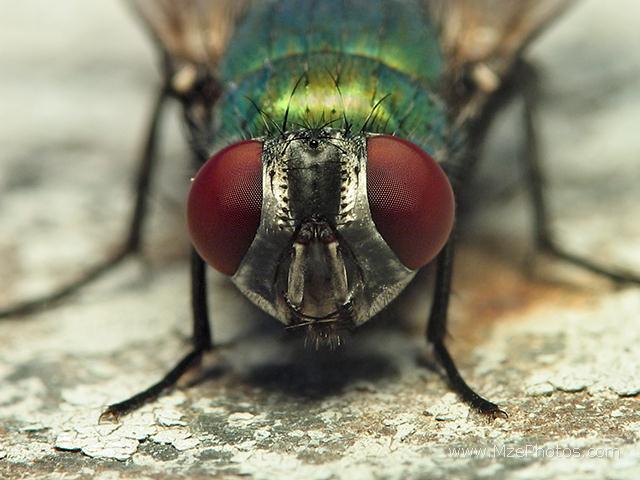
Why is it so hard to swat a fly? Maybe it’s just me, but my dealings with flies usually end in defeat. A fly can land and lift off from a surface seemingly in a split-second. They can twist and turn through the air with acrobatic finesse. To make matters worse, flies might as well have the ability to see the future since they zoom away, leaving me breathless and perplexed once I come back from a swat empty-handed. To abate my frustration, I searched for the secret to their sorcery. It lies within two small parts of their anatomy: halteres and ocelli.
The typical fly uses a single pair of wings to fly and located directly behind each wing, are bulbous and very sensitive organs called halteres. Each one rotates in time with the wingbeat as the fly moves forward in a straight line. As the fly begins to either turn left/right or rotate about itself, the haltere bends as well exerting a Coriolis Force upon small hairs within the haltere. The bend is converted into electrical signals which travel straight to the fly’s brain. As a result, a fly can interpret its current body position as it twists and turns in a way similar to a pilot reading a plane’s orientation in his or her cockpit’s heads-up display. Removal of the halteres results in the fly either continuously rotating about itself or unstable linear flight.
Paired with the funtion of halteres comes the ocelli (literally “simple eye” or “eyespot”). The current theory is that each ocellus aids in a fly’s maintenance of flight stability. While technically they are “eyes”, in that they contain a lens and collect light, the image that is processed in a fly’s ocelli are underfocused and have a wide-field of view. Instead, the ocelli are specialized for discerning any minute change in the brightness of surrounding light. Since a fly twists, turns, rolls, and just generally moves very quickly, the slightest difference in the surrounding light provides crucial information for its current orientation and allows the fly to deftly avoid any lurking dangers and moving figures, like a hand poised-to-swat. Furthermore, the ocelli let the fly know how it should orient its head to maintain stable flight and respond to its rotating body.
All in all, just give up on trying to swat flies. They’re the fighter-pilot, aero-extraordinaire nuisances of the insect world (to me at least), and the evolutionary wonder of their anatomy has earned them a place in my “Bugs to Respect” book.
F@*# mosquitoes, though.
The original piece that got me started can be found here. The rest can be found on Wikipedia :)